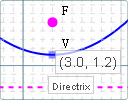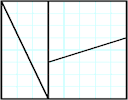IntMath Newsletter: Biorhythm and parabola graphs
By Murray Bourne, 17 Jan 2012
17 January 2012
In this Newsletter:
1. Biorhythm graphs
2. Interactive parabola graphs
3. Space scientist turns math teacher
4. Latest IntMath Poll - individual study
5. Friday Math Movies
6. Final thought - Sharpen your math tools
Welcome back, everyone! Here's hoping you all have a successful and happy 2012.
1. Biorhythm Graphs
2. Interactive parabola graphs
 |
I've added a new page containing 3 interactive graphs which explain parabola concepts. |
3. Space scientist turns math teacher
 |
Dave tells us about his interesting working career that often involved math, and how he recently became a math teacher. |
4. Latest IntMath Poll
Study math in a group?
The recent IntMath Poll asked readers if they usually study for math tests alone or with friends. In Asia it is very common to see students in groups frantically helping each other as tests draw near.
But overall, most of you prefer to study alone. Poll results:
Alone
82%
With a group of friends
9%
With one friend
9%
The current poll asks how you feel about math. You can vote on any page in IntMath.
5. Friday math movies
 |
(b) Using slope to bust a magic trick Where did the missing square go? We can use slopes of lines to solve this puzzle. |
6. Final thought - sharpen your math tools
When it comes to math, "sharpening your tools" could mean knowing the basics well, and it could also mean improving attention and concentration. Let's see what the famous Chines philosopher had to say about it:
The expectations of life depend upon diligence; the craftsman who would perfect his work must first sharpen his tools. [Confucius]
Until next time, enjoy whatever you learn.
See the 2 Comments below.


